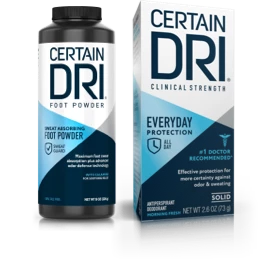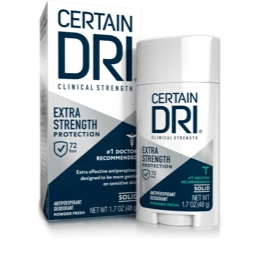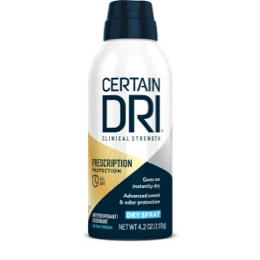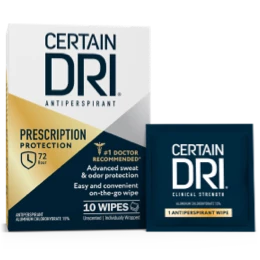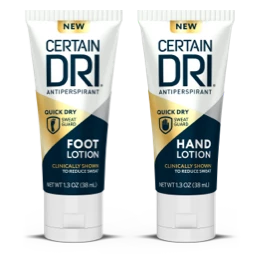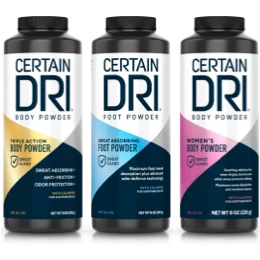Abnormal Amounts of Sweat For Teens
If you’re a teen or tween, or if you’re a parent, coach, teacher, or mentor, maybe you’re wondering what’s “normal” teen sweating and what’s not?
Or maybe you’re curious when “real” sweating begins in kids?
Or how the young people in your life can better cope with unwanted sweating?
We’re here to hopefully help with these questions – and more.
But first, of course, please keep in mind that everyone’s body is different and that if you have any concerns about your health, a child’s health, or unusual sweating symptoms, your best resource is almost always a knowledgeable healthcare provider — like your pediatrician or adolescent medicine doctor. Sweating can be symptom of something going on, so you always want to talk about new or different sweating with a health professional before attempting any self-care.
Puberty & Sweat – They Go Together
According to the Nemours Foundation, increased sweating is a part of growing up and typically starts to kick in around puberty (approximately age 10-14 for girls and 12-16 for boys). During puberty, sweat glands become more active and also start to produce a different type of sweat that can more easily lead to body odor than the watery kind of sweat kids are used to. Interestingly Parents magazine reports that sweating more than usual actually starts to occur a couple years before puberty, usually between the ages of 8 and 10. So if you or your child is noticing more sweating even before puberty — recognize there’s a wide range of “normal” here.
“Normal” vs “Abnormal” Amounts of Sweat
Ok, so we know that sweating increases closer to puberty and that sweating often starts to lead to more body odor as kids get older. But how much sweating is “normal” in a teenager (or anyone for that matter?)
That’s really hard to quantify because – as we said above – everyone is different and our bodies’ have a range of reactions to heat and emotions (both things that lead to sweating). But there are some situations and symptoms to pay attention to and that may mean that sweating is a bigger problem for you or the child in your life and it’s time to talk to a doctor about it.
Primary hyperhidrosis (often called just “hyperhidrosis”) is a medical condition of extreme, excessive or uncontrollable sweating, says the International Hyperhidrosis Society. This type of excessive sweating is more than what’s necessary to control body temperature, is not a symptom of another medical condition or a side effect of a medication, and is beyond what might be considered “typical” as a reaction to stress or emotions. And actually it’s quite common. Research says that about 4.8% of the population may have hyperhidrosis and that it might be even more common in teens. Indeed, one study from the International Hyperhidrosis Society found that as many as 1 in 5 teens experiences excessive sweating.
When is sweating excessive? The International Hyperhidrosis Society says that if sweating leads to major life adjustments or avoidances, stress or sadness, or accidents it’s time to talk about it with a doctor who can help you figure out what’s going on and, if appropriate, help you to find treatment.
To elaborate, it could be hyperhidrosis if sweating causes you to:
- Change clothes multiple times per day or choose your clothes based on anticipated sweating.
- Damage shoes, electronics/phones, papers, instruments, or other objects.
- Avoid activities, sports, social gatherings, public speaking/performing, or friends/loved ones because you’re embarrassed by your sweating, fear sweating, or physically cannot participate because of sweating.
- Dislike/avoid being close to others or being touched because you may be afraid someone will notice your sweating or will find it “gross.”
- Slip, fall, drop objects, or have other accidents.
- Develop rituals or habits that are unusual or complicated in an effort to control sweating. For instance, you may use fans, towels, powders, pads, etc. or carry these items with you.
- Worry about or have anxiety about your sweating. Or, sweating has impacted your emotions in other ways
- Develop skin infections due to frequently wet skin.
Please keep in mind that extreme sweating can be a symptom of another medical condition or a side effect of a medication that you’re taking. So, it’s important to talk about your sweating concerns with a knowledgeable healthcare provider so that other conditions can be ruled out first, before moving on.
The good news is that there are management strategies for extreme sweating in young people and adults, alike. And, powerful antiperspirants like Certain Dri play an important role in hyperhidrosis care. In fact, Certain Dri is the #1 recommended brand of antiperspirants for people with hyperhidrosis. In a 2017 survey, 85.3% of the dermatologists surveyed recommended the active ingredient aluminum chloride most often for patients with excessive sweating. Without a prescription and on the store shelves, you can only find aluminum chloride in Certain Dri Prescription Strength Clinical Roll-On.
Of course, for teens and the adults who care for them, it’s also important that an antiperspirant be gentle on the skin. Certain Dri is water-based, not alcohol-based like some other products, so it’s milder on your body.
Help yourself and any young person concerned about sweating to get the most out of Certain Dri by following these simple steps:
- Apply once a day in the evening before bedtime.
- Apply to completely dry skin. Not dry enough? Consider using a hair dryer on a cool setting to help get you there.
- Don’t apply Certain Dri directly after shaving. Since it’s best to apply Certain Dri in the evening, save shaving for the next morning, at least.



